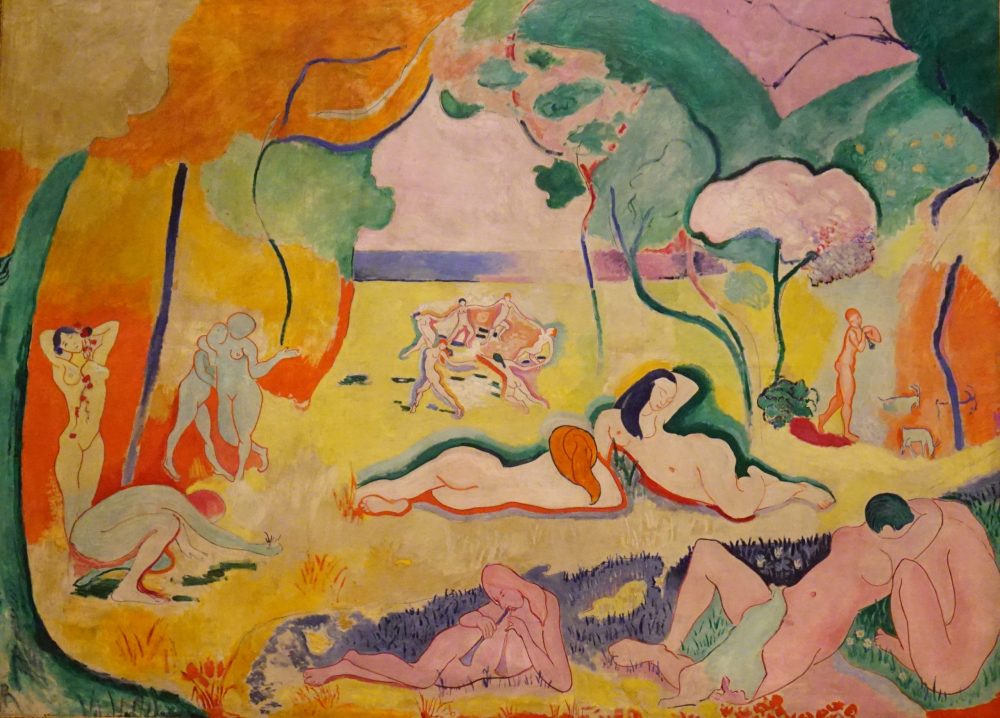Arcadia
Stories behind the Works of Art
We could make this publication thanks to small donations. How is 3 minutos de arte supported?
What is Arcadia? Did it actually exist?
Joy of Life (1905/06). Henri Matisse
Arcadia is a mythical place, the place where harmony and joy reign. Arcadia is the place where human beings enjoy, naturally and innocently, the pleasures of life, a kind of “primitive” happiness in the midst of nature.
Arcadia is that idyllic place (idealized to the extreme) that we all imagine as an exotic place, where people live in harmony, making music, dancing, loving each other, playing and resting peacefully. A timeless place, full of serenity, sensuality, and beauty. Paradise on Earth.
But Arcadia, in truth, was a province of ancient Greece. A region that owes its fame (and its marvelous characteristics) more to poetry and the other arts of Antiquity and the Renaissance than to reality.
This region of Greece was a rocky and poor region where life was rather difficult for its inhabitants. However, the poet Virgil (1st century B.C.) would turn it with his poetry into the ideal place we are describing.
Many centuries after Virgil, in the Renaissance, when there was a “rebirth” of those classical values of Antiquity, the theme of Arcadia was taken up again with force. But instead of a distant place, Arcadia was considered a distant time, a perfect past, a Golden Age.
As we can imagine, the theme of Arcadia has been depicted countless times since the Renaissance. We even see it here, in this modern work painted by Matisse at the beginning of the 20th century. This painting by Matisse with the theme of Arcadia is called Joy of Life. And, precisely, the theme and the title are the very essence of Fauvism: the “wild” colors used by the Fauves, or “wild beasts,” express the joy of life.
That is why this work is considered one of the most representative of Fauvism, a fundamental painting at the time when the “avant-gardes” were being developed. (Apparently, it even influenced Picasso to paint Les Demoiselles d’Avignon, the first painting of Cubism.) The avant-garde movements looked for modern ways of expression, but at the same time admired the ancestral, the naive, and the primitive. They looked for the most authentic human being: the one that had not been corrupted by the so-called “progress.”
Recommended links:
Henri Matisse: “I do not literally paint the table but the emotion it produces upon me.”
Timeline: Moments of Henri Matisse.
You can also find more material using the search engine.




0 Comments